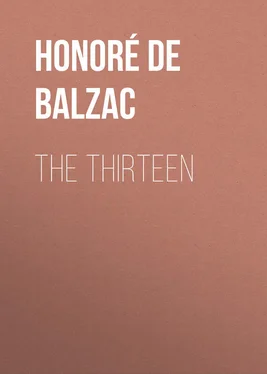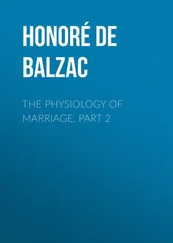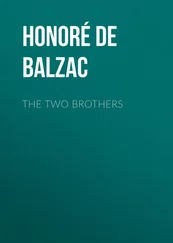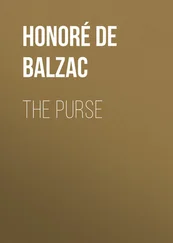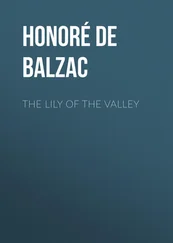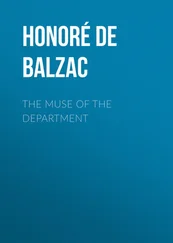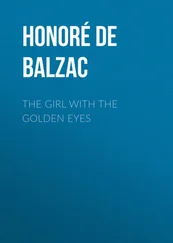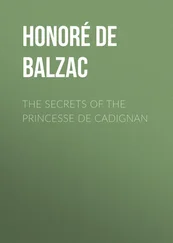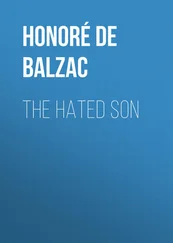Honoré Balzac - The Thirteen
Здесь есть возможность читать онлайн «Honoré Balzac - The Thirteen» — ознакомительный отрывок электронной книги совершенно бесплатно, а после прочтения отрывка купить полную версию. В некоторых случаях можно слушать аудио, скачать через торрент в формате fb2 и присутствует краткое содержание. Жанр: literature_19, foreign_antique, foreign_prose, на английском языке. Описание произведения, (предисловие) а так же отзывы посетителей доступны на портале библиотеки ЛибКат.
- Название:The Thirteen
- Автор:
- Жанр:
- Год:неизвестен
- ISBN:нет данных
- Рейтинг книги:3 / 5. Голосов: 1
-
Избранное:Добавить в избранное
- Отзывы:
-
Ваша оценка:
- 60
- 1
- 2
- 3
- 4
- 5
The Thirteen: краткое содержание, описание и аннотация
Предлагаем к чтению аннотацию, описание, краткое содержание или предисловие (зависит от того, что написал сам автор книги «The Thirteen»). Если вы не нашли необходимую информацию о книге — напишите в комментариях, мы постараемся отыскать её.
The Thirteen — читать онлайн ознакомительный отрывок
Ниже представлен текст книги, разбитый по страницам. Система сохранения места последней прочитанной страницы, позволяет с удобством читать онлайн бесплатно книгу «The Thirteen», без необходимости каждый раз заново искать на чём Вы остановились. Поставьте закладку, и сможете в любой момент перейти на страницу, на которой закончили чтение.
Интервал:
Закладка:
Honoré de Balzac
The Thirteen
INTRODUCTION
The Histoire des Treize consists – or rather is built up – of three stories: Ferragus or the Rue Soly , La Duchesse de Langeais or Ne touchez-paz a la hache , and La Fille aux Yeux d’Or .
To tell the truth, there is more power than taste throughout the Histoire des Treize , and perhaps not very much less unreality than power. Balzac is very much better than Eugene Sue, though Eugene Sue also is better than it is the fashion to think him just now. But he is here, to a certain extent competing with Sue on the latter’s own ground. The notion of the “Devorants” – of a secret society of men devoted to each other’s interests, entirely free from any moral or legal scruple, possessed of considerable means in wealth, ability, and position, all working together, by fair means or foul, for good ends or bad – is, no doubt, rather seducing to the imagination at all times; and it so happened that it was particularly seducing to the imagination of that time. And its example has been powerful since; it gave us Mr. Stevenson’s New Arabian Nights only, as it were, the other day.
But there is something a little schoolboyish in it; and I do not know that Balzac has succeeded entirely in eliminating this something. The pathos of the death, under persecution, of the innocent Clemence does not entirely make up for the unreasonableness of the whole situation. Nobody can say that the abominable misconduct of Maulincour – who is a hopeless “cad” – is too much punished, though an Englishman may think that Dr. Johnson’s receipt of three or four footmen with cudgels, applied repeatedly and unsparingly, would have been better than elaborately prepared accidents and duels, which were too honorable for a Peeping Tom of this kind; and poisonings, which reduced the avengers to the level of their victim. But the imbroglio is of itself stupid; these fathers who cannot be made known to husbands are mere stage properties, and should never be fetched out of the theatrical lumber-room by literature.
La Duchesse de Langeais is, I think, a better story, with more romantic attraction, free from the objections just made to Ferragus , and furnished with a powerful, if slightly theatrical catastrophe. It is as good as anything that its author has done of the kind, subject to those general considerations of probability and otherwise which have been already hinted at. For those who are not troubled by any such critical reflections, both, no doubt, will be highly satisfactory.
The third of the series, La Fille aux Yeux d’Or , in some respects one of Balzac’s most brilliant effects, has been looked at askance by many of his English readers. At one time he had the audacity to think of calling it La Femme aux Yeux Rouges . To those who consider the story morbid or, one may say, bizarre , one word of justification, hardly of apology, may be offered. It was in the scheme of the Comedie Humaine to survey social life in its entirety by a minute analysis of its most diverse constituents. It included all the pursuits and passions, was large and patient, and unafraid. And the patience, the curiosity, of the artist which made Cesar Birotteau and his bankrupt ledgers matters of high import to us, which did not shrink from creating a Vautrin and a Lucien de Rubempre, would have been incomplete had it stopped short of a Marquise de San-Real, of a Paquita Valdes. And in the great mass of the Comedie Humaine , with its largeness and reality of life, as in life itself; the figure of Paquita justifies its presence.
Considering the Histoire des Treize as a whole, it is of engrossing interest. And I must confess I should not think much of any boy who, beginning Balzac with this series, failed to go rather mad over it. I know there was a time when I used to like it best of all, and thought not merely Eugenie Grandet , but Le Pere Goriot (though not the Peau de Chagrin ), dull in comparison. Some attention, however, must be paid to two remarkable characters, on whom it is quite clear that Balzac expended a great deal of pains, and one of whom he seems to have “caressed,” as the French say, with a curious admixture of dislike and admiration.
The first, Bourignard or Ferragus, is, of course, another, though a somewhat minor example – Collin or Vautrin being the chief – of that strange tendency to take intense interest in criminals, which seems to be a pretty constant eccentricity of many human minds, and which laid an extraordinary grasp on the great French writers of Balzac’s time. I must confess, though it may sink me very low in some eyes, that I have never been able to fully appreciate the attractions of crime and criminals, fictitious or real. Certain pleasant and profitable things, no doubt, retain their pleasure and their profit, to some extent, when they are done in the manner which is technically called criminal; but they seem to me to acquire no additional interest by being so. As the criminal of fact is, in the vast majority of cases, an exceedingly commonplace and dull person, the criminal of fiction seems to me only, or usually, to escape these curses by being absolutely improbable and unreal. But I know this is a terrible heresy.
Henri de Marsay is a much more ambitious and a much more interesting figure. In him are combined the attractions of criminality, beauty, brains, success, and, last of all, dandyism. It is a well-known and delightful fact that the most Anglophobe Frenchmen – and Balzac might fairly be classed among them – have always regarded the English dandy with half-jealous, half-awful admiration. Indeed, our novelist, it will be seen, found it necessary to give Marsay English blood. But there is a tradition that this young Don Juan – not such a good fellow as Byron’s, nor such a grand seigneur as Moliere’s – was partly intended to represent Charles de Remusat, who is best known to this generation by very sober and serious philosophical works, and by his part in his mother’s correspondence. I do not know that there ever were any imputation on M. de Remusat’s morals; but in memoirs of the time, he is, I think, accused of a certain selfishness and hauteur , and he certainly made his way, partly by journalism, partly by society, to power very much as Marsay did. But Marsay would certainly not have written Abelard and the rest, or have returned to Ministerial rank in our own time. Marsay, in fact, more fortunate than Rubempre, and of a higher stamp and flight than Rastignac, makes with them Balzac’s trinity of sketches of the kind of personage whose part, in his day and since, every young Frenchman has aspired to play, and some have played. It cannot be said that “a moral man is Marsay”; it cannot be said that he has the element of good-nature which redeems Rastignac. But he bears a blame and a burden for which we Britons are responsible in part – the Byronic ideal of the guilty hero coming to cross and blacken the old French model of unscrupulous good humor. It is not a very pretty mixture or a very worthy ideal; but I am not so sure that it is not still a pretty common one.
The association of the three stories forming the Histoire des Treize is, in book form, original, inasmuch as they filled three out of the four volumes of Etudes des Moeurs published in 1834-35, and themselves forming part of the first collection of Scenes de la Vie Parisienne . But Ferragus had appeared in parts (with titles to each) in the Revue de Paris for March and April 1833, and part of La Duchesse de Langeais in the Echo de la Jeune France almost contemporaneously. There are divisions in this also. Ferragus and La Duchesse also appeared without La Fille aux Yeux d’Or in 1839, published in one volume by Charpentier, before their absorption at the usual time in the Comedie .
Читать дальшеИнтервал:
Закладка:
Похожие книги на «The Thirteen»
Представляем Вашему вниманию похожие книги на «The Thirteen» списком для выбора. Мы отобрали схожую по названию и смыслу литературу в надежде предоставить читателям больше вариантов отыскать новые, интересные, ещё непрочитанные произведения.
Обсуждение, отзывы о книге «The Thirteen» и просто собственные мнения читателей. Оставьте ваши комментарии, напишите, что Вы думаете о произведении, его смысле или главных героях. Укажите что конкретно понравилось, а что нет, и почему Вы так считаете.
